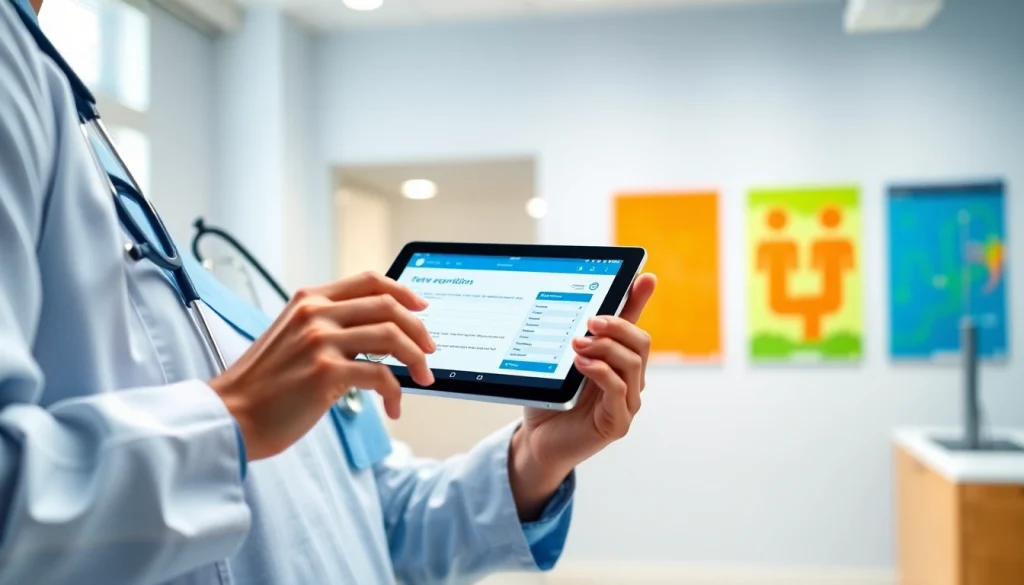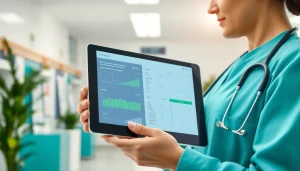Understanding Benefits of Mobile Eprescription for Modern Healthcare

1. Introduction to Mobile Eprescription
The rapid advancement of technology has revolutionized various aspects of the healthcare industry, particularly in prescribing medications. Among these innovations, mobile e-prescription has emerged as a transformative approach for healthcare providers, enhancing the way prescriptions are managed and dispensed. Understanding the benefits of mobile eprescription is crucial for healthcare professionals seeking to streamline their practices and improve patient care.
1.1 What is Mobile Eprescription?
Mobile e-prescription is a digital solution that allows healthcare providers to create and send prescriptions electronically using mobile devices. This method eliminates the need for traditional paper prescriptions and significantly reduces the risks associated with handwritten prescriptions, such as legibility issues and transcription errors. Healthcare professionals can quickly input medication details, dosages, and patient information, sending the prescription directly to the pharmacy of the patient’s choice.
1.2 Historical Context and Evolution
The concept of electronic prescriptions dates back to the late 20th century, initially focusing on improving the accuracy of medication orders in hospitals. Over the years, advancements in technology—particularly the proliferation of smartphones and tablet devices—have facilitated the growth of mobile e-prescription systems. As healthcare practices evolve towards a digital-first approach, mobile e-prescription has become an integral part of modern healthcare, responding to the needs of both providers and patients.
1.3 The Role of Technology in E-prescription
Technology plays a vital role in the effectiveness of mobile e-prescription systems. The integration of sophisticated software enables real-time access to patient medication histories, allergy information, and potential drug interactions. Advanced features, such as cloud storage and secure communication channels, ensure that sensitive patient data is protected while still being accessible to healthcare providers at any time and from any location.
2. Benefits of Mobile Eprescription
2.1 Improved Accuracy in Medication Dispensing
One of the most significant advantages of mobile e-prescription is the improved accuracy in medication dispensing. Traditional handwritten prescriptions can often lead to misinterpretation and errors, particularly when the handwriting is illegible. By using a mobile e-prescription system, healthcare providers can enter medication information directly into the device, eliminating potential errors. The system can also cross-check medication names with a built-in drug database, ensuring that the correct medication is prescribed.
2.2 Enhanced Patient Safety and Reduced Errors
The safety of patients is paramount in healthcare, and mobile e-prescriptions significantly enhance this aspect. With clearly defined and electronically transmitted prescriptions, the chance of medication errors caused by miscommunication is drastically reduced. Mobile e-prescription systems can provide alerts for potential drug interactions, allergies, and contraindications based on a patient’s medical record, thereby improving overall patient safety. This proactive approach in medication management leads to better health outcomes and increased trust in healthcare providers.
2.3 Increased Efficiency for Healthcare Providers
Another major benefit of mobile e-prescription is the increase in efficiency for healthcare providers. Mobile systems allow for faster and more streamlined workflows, enabling healthcare professionals to spend less time on paperwork and more time focusing on patient care. Prescriptions can be processed quickly at the point of care, facilitating immediate access to medication. Moreover, electronic prescriptions can be sent directly to pharmacies without requiring physical paperwork, thereby reducing waiting times for patients.
3. Challenges and Solutions in Implementing Mobile Eprescription
3.1 Common Barriers to Adoption
Despite the numerous benefits, several barriers can hinder the adoption of mobile e-prescription systems. One significant challenge is the resistance to change among healthcare staff who may be accustomed to traditional methods. Additionally, concerns about data security and privacy can also prevent some providers from embracing digital solutions. Furthermore, the initial costs associated with purchasing and implementing the e-prescription software can be daunting for smaller practices.
3.2 Overcoming Technological Challenges
To overcome technological challenges, it is essential for healthcare organizations to invest in robust e-prescribing software that includes strong cybersecurity measures. Training sessions for staff should also be conducted to familiarize them with new systems, addressing their concerns about technology. Providing ongoing support and resources can help improve adoption rates and ease the transition to mobile e-prescription.
3.3 Training and Support for Healthcare Staff
Training and support are crucial elements in the successful implementation of mobile e-prescription. Healthcare organizations should develop comprehensive training programs that encompass the functionalities of the system, as well as best practices for usage. Support should also be readily available to address any technical issues that may arise during usage, ensuring that staff feel confident and capable in utilizing the technology effectively.
4. Real-World Applications of Mobile Eprescription
4.1 Case Studies of Successful Implementation
Numerous healthcare organizations have successfully implemented mobile e-prescription systems, resulting in significant improvements in workflow and patient care. For instance, a large urban hospital system observed a reduction in prescription errors by over 40% after transitioning to mobile e-prescribing. Similar case studies from various healthcare facilities highlight the scalability and adaptability of mobile e-prescription across different practice sizes and specialties.
4.2 Patient Experience and Satisfaction Metrics
Patient satisfaction is a critical metric in evaluating the effectiveness of mobile e-prescription systems. Many patients report a more seamless experience, with the ability to receive their prescriptions without the hassle of paper documentation. Advertising the positives of e-prescribing has shown increased patient satisfaction ratings, contributing to higher retention rates and improved health outcomes. Facilities implementing these systems often carry out patient feedback surveys to quantify satisfaction levels and identify areas for improvement.
4.3 Future Trends in Mobile Eprescription Technology
The future of mobile e-prescription technology looks promising, with ongoing developments in artificial intelligence (AI) and machine learning leading the way. These advancements could provide healthcare providers with further insights into patient medication compliance, predictive analysis for medication needs, and personalized medication plans. Integration with wearable technology and telehealth services will likely enhance the patient experience, allowing healthcare providers to track and manage prescriptions more efficiently.
5. Conclusion and Future Perspectives
5.1 The Future of Mobile Eprescription in Healthcare
As the landscape of healthcare continues to evolve, mobile e-prescription systems are poised to become an indispensable tool for healthcare providers. Their potential to enhance accuracy, safety, and efficiency cannot be overlooked. As technology advances and new solutions are integrated, the benefits of mobile eprescription will likely expand, offering healthcare providers and patients even greater tools to manage health and wellness.
5.2 Final Thoughts on Benefits of Mobile Eprescription
In summary, the benefits of mobile eprescription are profound and transformative. From improved accuracy and enhanced safety to increased efficiency, these systems significantly impact patient care and healthcare delivery. As more providers recognize the advantages of incorporating mobile e-prescription into their practices, the healthcare industry will continue to evolve towards more innovative and patient-centered approaches.
5.3 Call to Action for Healthcare Providers
Healthcare providers must evaluate their current prescribing practices and consider the integration of mobile e-prescription systems into their workflow. By doing so, they will not only enhance their operational efficiency but also significantly improve patient safety and satisfaction. Embracing this technology will ultimately contribute to a modernized healthcare system that prioritizes quality care and patient empowerment.







